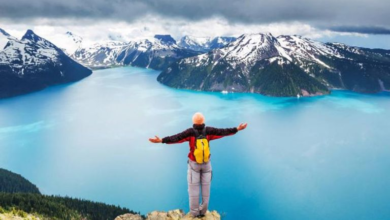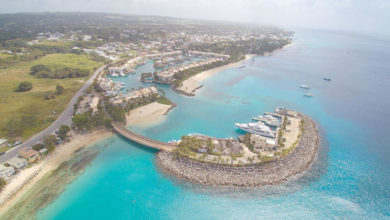Exploring the Enchanting Charms of Nature in Egypt: A Traveler’s Delight
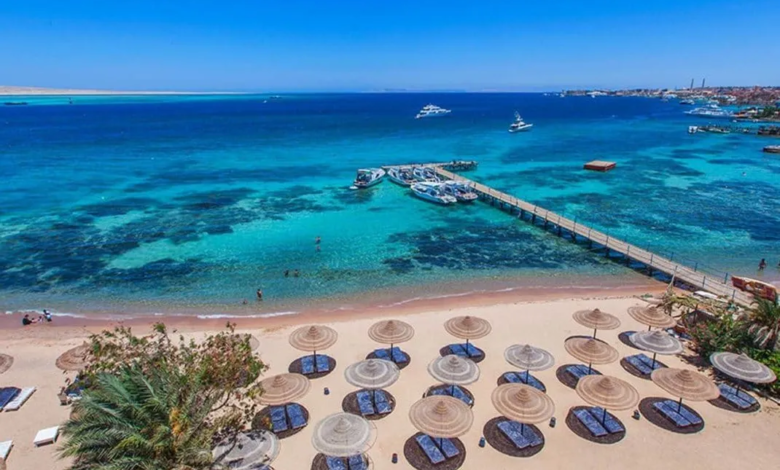
Introduction:
When one thinks of Egypt, images of ancient pyramids, majestic temples, and bustling cities often come to mind. However, beyond its rich historical and cultural treasures, Egypt also boasts a remarkable natural beauty that captivates every traveler. From serene desert landscapes to breathtaking coastal scenery, Egypt offers a diverse range of natural wonders that are sure to leave visitors in awe. In this article, we will delve into the enchanting charms of nature in Egypt, highlighting some of the must-visit destinations for nature enthusiasts.
- The Sinai Peninsula:
Located between the Red Sea and the Mediterranean Sea, the Sinai Peninsula is a paradise for adventure seekers and nature lovers alike. Its rugged mountains, awe-inspiring canyons, and crystal-clear waters create a remarkable setting for outdoor exploration. The iconic Mount Sinai, towering at 2,285 meters, offers breathtaking sunrise and sunset views. The vibrant marine life of the Red Sea, showcased in world-renowned diving spots like Dahab and Sharm El Sheikh, is a haven for snorkelers and scuba divers. - The White Desert:
Prepare to be transported to another world as you venture into the mesmerizing White Desert. Located in the Western Desert, this unique landscape features surreal white rock formations crafted by the forces of nature. The vast expanse of chalk-like rock formations, shaped by wind erosion, creates an otherworldly atmosphere. As the sun sets, the white rocks take on hues of gold and pink, providing a truly magical experience. - The Nile River:
The Nile, the lifeblood of Egypt, is not only a historic waterway but also a stunning natural wonder. Embark on a Nile cruise and witness the beauty of the river as it winds through lush green landscapes and ancient temples. The Nile’s serene shores offer a tranquil escape from the bustling cities, with opportunities for birdwatching, fishing, and simply appreciating the picturesque scenery. - Siwa Oasis:
Nestled in the heart of the Western Desert, Siwa Oasis is a hidden gem that transports visitors to a verdant paradise amid the arid surroundings. This remote oasis is renowned for its natural springs, palm groves, and ancient ruins. Take a dip in the crystal-clear waters of Cleopatra’s Bath, explore the ancient Temple of the Oracle, or simply immerse yourself in the tranquility of the surroundings. - Red Sea Riviera:
Egypt’s Red Sea Riviera offers a tropical escape with its stunning coastline and vibrant marine life. Resorts like Hurghada and Marsa Alam provide access to pristine beaches, crystal-clear waters, and colorful coral reefs. Snorkeling, diving, or simply relaxing on the sandy shores are popular activities here. The Red Sea Riviera is an ideal destination for those seeking a blend of natural beauty, water sports, and luxurious relaxation.
Egypt’s natural wonders and attractions continue to unveil the country’s rich history, geological marvels, and cultural heritage. Whether it’s ancient monasteries, fossilized remains, unique landscapes, or historical fortresses, Egypt offers a captivating blend of natural and man-made wonders for travelers to explore and appreciate.

some additional details about the enchanting charms of nature in Egypt:
- The Mediterranean Coast:
Egypt’s Mediterranean coastline is a treasure trove of natural beauty, with pristine beaches, charming coastal towns, and historical sites. Places like Alexandria, Marsa Matrouh, and El Alamein offer stunning coastal scenery, clear turquoise waters, and a relaxed atmosphere. Visitors can soak up the sun, indulge in water sports, or explore ancient ruins along the coast. - The Western Desert:
The Western Desert covers a vast area of Egypt and is home to diverse natural wonders. From the Black Desert with its volcanic mountains and blackened sand to the Great Sand Sea, a vast stretch of golden sand dunes, this region offers a unique experience for adventurous travelers. The desert also boasts stunning rock formations, ancient oases, and the mesmerizing Crystal Mountain, where quartz crystals shimmer under the desert sun. - Wadi El Rayan:
Located southwest of Cairo, Wadi El Rayan is a breathtaking natural reserve that showcases the beauty of Egypt’s desert landscapes. It is home to two stunning man-made lakes, created as a result of agricultural drainage efforts. The contrasting blue waters against the golden desert backdrop create a mesmerizing sight. Wadi El Rayan is also a haven for birdwatchers, as it attracts a variety of migratory birds. - Ras Muhammad National Park:
Situated at the southern tip of the Sinai Peninsula, Ras Muhammad National Park is a marine reserve renowned for its vibrant coral reefs and abundant marine life. Snorkelers and divers flock to this underwater paradise to explore the diverse ecosystem. The park also offers picturesque beaches, mangrove forests, and opportunities for wildlife spotting, including dolphins and sea turtles. - Fayoum Oasis:
Located southwest of Cairo, the Fayoum Oasis is a fertile region nestled between desert cliffs. It is known for its picturesque landscapes, tranquil lakes, and ancient archaeological sites. Qarun Lake, the largest saltwater lake in Egypt, attracts a variety of migratory birds, making it a paradise for bird enthusiasts. The oasis is also home to the UNESCO World Heritage Site of Wadi Al-Hitan (Valley of the Whales), where visitors can see fossilized remains of ancient whales. - Saint Catherine’s Monastery:
Nestled at the foot of Mount Sinai in the Sinai Peninsula, Saint Catherine’s Monastery is a UNESCO World Heritage Site and a place of immense natural and historical significance. The surrounding mountains offer scenic hiking trails, including the famous trek to the summit of Mount Sinai, where visitors can witness a breathtaking sunrise or sunset. The area is also home to rare plant species and offers a serene atmosphere for spiritual reflection.
Egypt’s natural wonders are a testament to the country’s diverse geography, offering a wide range of experiences for nature enthusiasts. Whether you’re seeking adventure in the desert, exploring marine life in the Red Sea, or enjoying the tranquility of oases and mountains, Egypt’s natural charms are sure to leave a lasting impression on every traveler.

some more fascinating details about the natural wonders and attractions in Egypt:
- The Colored Canyons of Nuweiba:
Located in the eastern part of the Sinai Peninsula, the Colored Canyons of Nuweiba are a geological marvel. These narrow canyons feature striking multicolored rock formations, ranging from shades of red and orange to yellow and purple. Hiking through the canyons and witnessing the vibrant hues of the rock walls is a surreal experience. - The Oasis of Bahariya:
Situated in the Western Desert, the Oasis of Bahariya is known for its lush palm groves, hot springs, and archaeological sites. It offers a tranquil escape from the desert surroundings, with its refreshing natural springs like the Bir El-Ghaba and the Bir El-Matar. The nearby Black Desert and the Valley of the Golden Mummies are also worth exploring. - The Aswan Botanical Garden:
Located on Kitchener’s Island in the Nile River, the Aswan Botanical Garden is a haven of tranquility and natural beauty. The garden is home to a diverse collection of exotic plants and trees from different parts of the world, including Africa, Asia, and South America. Visitors can take leisurely walks amidst the lush greenery, enjoy stunning river views, and learn about various plant species. - The White Mountain:
Also known as Gebel Abiad, the White Mountain is a prominent peak in the Eastern Desert. As its name suggests, the mountain is characterized by its white limestone rocks, contrasting with the surrounding desert landscape. The area is popular among hikers and nature enthusiasts who can enjoy panoramic views of the desert plains from the mountain’s summit. - The Mediterranean Sea Islands:
Egypt’s Mediterranean coastline is dotted with picturesque islands that offer a unique natural charm. The islands of the Rosetta Archipelago, including Nelson Island and Abu Mandur Island, are known for their sandy beaches, crystal-clear waters, and abundant birdlife. The Al-Farahidi Island near Alexandria is another popular destination, featuring beautiful beaches, coral reefs, and opportunities for water sports. - The Waterfalls of Wadi El Gemal:
Located in the Eastern Desert, the Wadi El Gemal National Park is a vast protected area characterized by its rugged mountains, sandy plains, and hidden oases. The park is home to several seasonal waterfalls, such as Wadi El Gemal Waterfall and Wadi El Shait Waterfall. These cascades provide a refreshing retreat for visitors, surrounded by the tranquility of the desert.
Egypt’s natural attractions offer a captivating blend of diverse landscapes, from majestic mountains and canyons to serene oases and coastal beauty. Exploring these natural wonders allows travelers to experience the rich biodiversity and unique geological formations that make Egypt a truly remarkable destination.

more captivating details about Egypt’s natural wonders and attractions:
- The Valley of the Kings:
Located on the west bank of the Nile River near Luxor, the Valley of the Kings is renowned for its ancient tombs of pharaohs and nobles. While primarily known for its historical significance, the valley is also surrounded by stunning natural scenery. The rugged cliffs and barren desert landscape create a dramatic backdrop, adding to the allure of this archaeological site. - The Great Sand Sea:
Stretching across the western part of Egypt’s Sahara Desert, the Great Sand Sea is a vast expanse of undulating sand dunes that seem to stretch endlessly. The sea of golden sand offers a surreal and mesmerizing experience, particularly during sunrise and sunset when the shifting colors create a breathtaking spectacle. Adventurous travelers can embark on desert safaris or camel treks to explore this remote and captivating landscape. - The Fayum Depression:
The Fayum Depression, located southwest of Cairo, is a natural basin that encompasses the Fayum Oasis. This fertile region is known for its picturesque scenery, including lush farmlands, palm-fringed lakes, and ancient ruins. The Birket Qarun, the largest lake in the area, is a haven for birdwatchers, attracting various migratory bird species. The Fayum Depression offers a tranquil setting and a glimpse into rural Egyptian life. - The Mountain of the Dead:
Situated near the ancient city of Thebes (modern-day Luxor), the Mountain of the Dead, or Deir el-Medina, is an archaeological site that was once the home of the artisans and laborers who constructed the tombs in the Valley of the Kings. The mountain itself is a striking natural feature with its rugged cliffs and rock formations. Exploring the site allows visitors to witness both the historical significance and the natural beauty of this ancient settlement. - The Siwa Salt Lakes:
Siwa Oasis, located in the Western Desert, is not only known for its freshwater springs but also for its picturesque salt lakes. The most famous among them is the Salt Lake or Birket Siwa, which is surrounded by white crystallized salt and offers a stunning contrast against the desert landscape. Visitors can float in its salty waters and enjoy the serene ambiance of this unique natural feature. - The Red Sea Coral Reefs:
Egypt’s Red Sea coast is renowned for its vibrant coral reefs that teem with an abundance of marine life. Popular diving and snorkeling spots like the Ras Mohammed National Park and the Giftun Islands allow visitors to explore these underwater ecosystems. The coral reefs are a kaleidoscope of colors, home to a wide variety of fish, turtles, and even dolphins, providing an unforgettable experience for nature enthusiasts.
Egypt’s natural wonders offer a captivating blend of historical sites, desert landscapes, oases, and underwater marvels. Exploring these diverse natural attractions allows travelers to appreciate the country’s rich heritage while immersing themselves in the stunning beauty of Egypt’s natural surroundings.
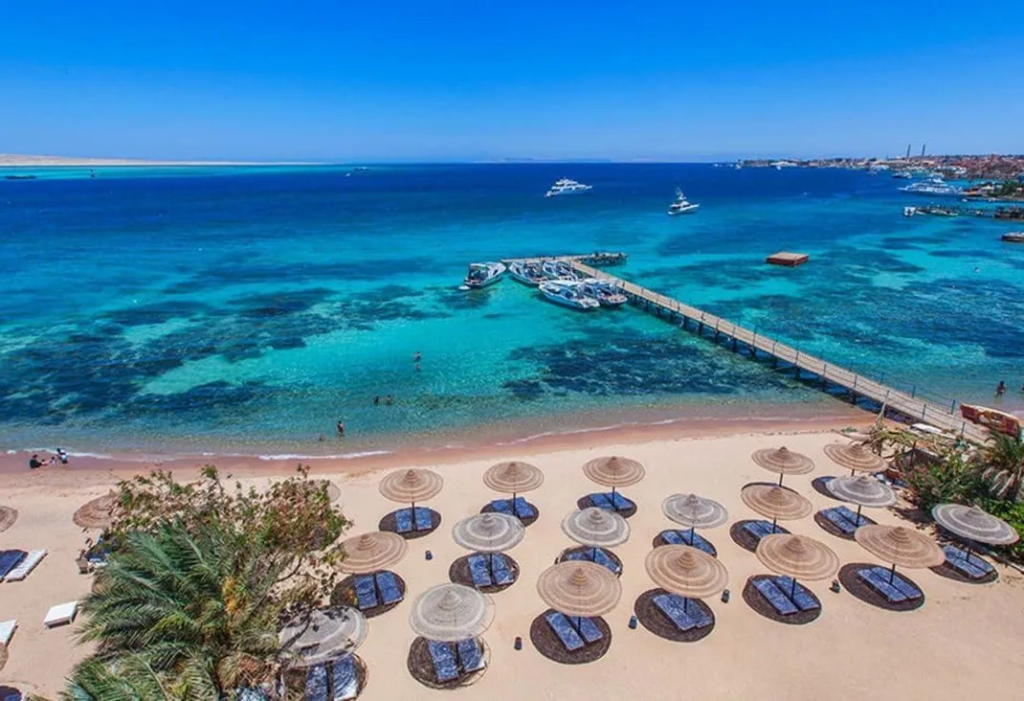
more fascinating details about Egypt’s natural wonders and attractions:
- The Nile River:
The Nile River is the lifeblood of Egypt, and it plays a crucial role in the country’s natural and cultural heritage. It is the longest river in Africa and has shaped the landscape and civilization of Egypt for thousands of years. The river offers picturesque views, especially during sunset cruises or felucca boat rides, where travelers can witness the tranquil beauty of the water, the surrounding lush vegetation, and the traditional rural life along the riverbanks. - The Ras Abu Gallum Protectorate:
Located in the northern part of the Sinai Peninsula, the Ras Abu Gallum Protectorate is a pristine coastal area that showcases the beauty of the Red Sea. It is home to stunning coral reefs, colorful fish, and other marine creatures. The area is popular among snorkelers and divers who can explore the underwater paradise. The protectorate is also known for its rugged mountains and offers opportunities for hiking and camel trekking. - The White Desert:
Situated in the Western Desert, the White Desert is a surreal and otherworldly landscape characterized by its unique chalk rock formations. The stark white rock formations, sculpted by wind and erosion, create a mesmerizing sight, especially during sunrise and sunset when they glow in golden hues. The area offers camping opportunities, allowing visitors to spend a night under the stars and witness the ethereal beauty of the desert. - The Siwa Oasis:
Siwa Oasis, located near the border with Libya, is a hidden gem nestled amidst the Western Desert. It is known for its lush palm groves, freshwater springs, and ancient mud-brick settlements. The oasis offers a tranquil and idyllic setting, with natural hot springs like Cleopatra’s Bath providing a rejuvenating experience. The landscape is dotted with salt lakes and sand dunes, offering a unique blend of natural attractions. - The Fayum Waterwheels:
In the Fayum Oasis, you can find the famous Fayum Waterwheels, also known as sakias. These traditional irrigation systems have been used for centuries to bring water from the Nile River to irrigate the agricultural lands of the oasis. The sight of these large wooden wheels turning and splashing water is not only a practical engineering feat but also a visually striking and photogenic scene. - The Coral Islands of the Red Sea:
Egypt’s Red Sea coast is dotted with numerous coral islands that offer pristine beaches, crystal-clear waters, and vibrant coral reefs. Islands like Tiran, Giftun, and Zabargad are popular among beach lovers and water sports enthusiasts. Snorkeling and diving around these islands allow visitors to explore the rich marine biodiversity, including colorful coral gardens, tropical fish, and even encounters with dolphins and turtles.
Egypt’s natural wonders are a testament to the country’s diverse landscapes, ranging from the majestic Nile River and its surrounding fertile lands to the awe-inspiring desert landscapes and underwater marvels of the Red Sea. Whether exploring ancient oases, hiking through canyons, or immersing in the underwater world, Egypt offers a wealth of natural attractions that continue to captivate travelers from around the world.

more intriguing details about Egypt’s natural wonders and attractions:
- The St. Catherine’s Monastery and Mount Sinai:
Located at the foot of Mount Sinai in the southern part of the Sinai Peninsula, St. Catherine’s Monastery is a UNESCO World Heritage site and one of the oldest Christian monasteries in the world. The mountain itself holds great religious significance as it is believed to be the place where Moses received the Ten Commandments. The area is known for its rugged beauty, with rocky landscapes and stunning views from the summit of Mount Sinai at sunrise. - The Wadi El Hitan (Valley of the Whales):
Also known as the Valley of the Whales, Wadi El Hitan is a UNESCO World Heritage site located in the Western Desert. This unique site showcases an exceptional collection of fossils, including the skeletal remains of ancient whale species that once inhabited the region when it was covered by a prehistoric sea. Visitors can explore the fossilized remains and learn about the evolution of whales while enjoying the natural beauty of the desert surroundings. - The Qattara Depression:
Situated in the Western Desert, the Qattara Depression is one of the lowest points in Egypt and one of the most inhospitable places on Earth. It is a vast, salt-crusted basin surrounded by sand dunes and jagged cliffs. The depression is known for its extreme temperatures and arid conditions. Despite its harsh environment, the Qattara Depression has drawn the interest of scientists and explorers due to its unique geological features. - The Wadi El Rayan:
Located in the Fayum Oasis, the Wadi El Rayan is a protected area known for its stunning desert landscapes and two interconnected lakes. The lakes were created as a result of water diversion from the Nile River, and they provide a habitat for various bird species, including migratory birds. The area is a popular destination for nature lovers, offering opportunities for birdwatching, hiking, and picnicking amidst the picturesque desert scenery. - The Red Sea Mountains:
The Red Sea Mountains form a stunning backdrop along the eastern coast of the country. These mountain ranges feature jagged peaks, deep canyons, and colorful rock formations, creating a dramatic contrast against the turquoise waters of the Red Sea. The mountains offer opportunities for hiking and rock climbing, providing breathtaking vistas and glimpses of the diverse flora and fauna that thrive in this arid region. - The Wadi Al-Hitan Whale Valley:
Similar to Wadi El Hitan, the Wadi Al-Hitan Whale Valley is another UNESCO World Heritage site that showcases the fossilized remains of ancient whales. Located in the Western Desert, this desert valley provides a unique insight into the evolution of marine life and the geological history of the region. Visitors can explore the well-preserved fossils, including the skeletal remains of early whale species, and learn about their evolutionary journey.
Egypt’s natural wonders encompass a diverse range of landscapes, from majestic mountains and ancient monasteries to fossil-rich valleys and expansive desert plains. These remarkable attractions offer a glimpse into the country’s geological history, rich biodiversity, and cultural significance. Exploring these natural wonders allows travelers to immerse themselves in the awe-inspiring beauty and fascinating stories that Egypt has to offer.

more captivating details about Egypt’s natural wonders and attractions:
- The Aswan High Dam:
The Aswan High Dam is a monumental engineering feat located on the Nile River in southern Egypt. Built in the 1960s, the dam created Lake Nasser, one of the largest man-made lakes in the world. The dam not only helps regulate the flow of the Nile and provides electricity but also offers scenic views of the vast lake and its surrounding desert landscape. Visitors can take boat tours to explore the lake, visit the nearby Philae Temple, and learn about the importance of the dam for Egypt’s agriculture and energy needs. - The Colored Canyon:
Situated in the Sinai Peninsula near the town of Nuweiba, the Colored Canyon is a natural wonder formed by the erosion of sandstone over millions of years. The canyon walls feature vivid hues of red, yellow, and orange, creating a striking visual spectacle. Visitors can hike through the narrow passages of the canyon, marveling at the vibrant colors and unique rock formations. The Colored Canyon is a popular destination for adventure seekers and nature enthusiasts. - The Wadi Rum:
Although most famous for its association with Jordan, a part of the Wadi Rum desert extends into the eastern part of Egypt’s Sinai Peninsula. This desert wilderness offers a surreal landscape of towering sandstone cliffs, sand dunes, and ancient rock formations. Visitors can embark on 4×4 desert safaris, camel rides, or even hot air balloon rides to experience the breathtaking beauty of this vast desert expanse. - The Mediterranean Coast:
Egypt’s northern coast along the Mediterranean Sea is known for its beautiful beaches and picturesque coastal towns. Destinations like Alexandria, Marsa Matrouh, and El Alamein offer a mix of historical sites, seaside resorts, and pristine stretches of sand. The turquoise waters of the Mediterranean provide a refreshing escape from the desert heat, and visitors can enjoy swimming, sunbathing, and engaging in water sports activities. - The Oases of the Western Desert:
Egypt’s Western Desert is dotted with several oases that offer a respite from the arid landscapes. The Bahariya, Farafra, Dakhla, and Kharga oases are among the most well-known. These oases are characterized by palm groves, natural springs, and ancient ruins. Visitors can explore the oasis towns, visit archaeological sites, and even soak in the therapeutic hot springs found in some of these oases. - The Ras Muhammad National Park:
Located at the southern tip of the Sinai Peninsula, Ras Muhammad National Park is a marine reserve that boasts incredible underwater biodiversity. The park is renowned for its vibrant coral reefs, including the famous Shark and Yolanda Reefs. Snorkelers and divers can witness a plethora of marine life, including colorful coral formations, tropical fish, turtles, and even reef sharks. The park also offers stunning coastal scenery and opportunities for beach relaxation.
Egypt’s natural wonders and attractions are as diverse as they are captivating. From ancient river valleys and historic dams to desert canyons, coastal beauty, and underwater marvels, Egypt offers a wealth of natural treasures for visitors to explore and appreciate.

more intriguing details about Egypt’s natural wonders and attractions:
- The Siwa Salt Lakes:
Siwa Oasis is not only known for its lush palm groves but also for its mesmerizing salt lakes. The Great Salt Lake and the Maraqi Salt Lake are two prominent saline lakes in the region. These lakes form stunning patterns of crystallized salt on their surfaces, creating a surreal and ethereal landscape. Visitors can float in the buoyant waters of the lakes, which are believed to have therapeutic properties, while enjoying the serene ambiance of the surrounding desert. - The Black Desert:
Located in the Western Desert, the Black Desert is named for its dark volcanic rocks and black sand dunes, which provide a striking contrast against the golden sand and blue sky. The area offers a unique and dramatic landscape that attracts adventure seekers and photographers. Visitors can explore the desert on 4×4 vehicles or experience the thrill of sandboarding down the black dunes. - The Fayum Depression and Lake Qarun:
The Fayum Depression, also known as the Fayum Basin, is a large low-lying area in the Western Desert. It is home to Lake Qarun, one of Egypt’s largest saltwater lakes. The lake and its surrounding wetlands are significant for their biodiversity, attracting numerous bird species, including flamingos and migratory birds. The area is a haven for birdwatching enthusiasts and nature lovers, offering opportunities to spot rare and exotic avian species. - The Farafra White Desert:
The Farafra Oasis is renowned for its unique and stunning White Desert. The landscape is dominated by chalk rock formations that resemble giant mushrooms, pillars, and other whimsical shapes. These formations were created by wind erosion over thousands of years. The surreal white landscape, especially during the full moon, creates an otherworldly atmosphere that has made the White Desert a favorite among photographers and adventure enthusiasts. - The Mountain of the Dead (Jebel al-Mawta):
Located near the ancient city of Akhmim in Upper Egypt, the Mountain of the Dead is an archaeological site and necropolis that dates back to ancient times. It is home to a vast collection of rock-cut tombs and burial chambers, adorned with intricate carvings and paintings. These tombs provide valuable insights into the funerary practices and beliefs of ancient Egyptians. Exploring the site allows visitors to witness the artistic and cultural heritage of the region. - The Mangrove Forests of the Red Sea:
Along the coast of the Red Sea, particularly in the areas of Marsa Alam and El Quseir, there are unique mangrove forests. These coastal forests thrive in the intertidal zones, where saltwater and freshwater mix. The mangroves provide essential habitats for various marine species, including fish, crustaceans, and migratory birds. Visitors can explore the mangroves on guided tours, observing the rich biodiversity and appreciating the ecological importance of these coastal ecosystems.
Egypt’s natural wonders continue to captivate and surprise with their diversity and beauty. From stunning salt lakes and desert landscapes to ancient tombs and coastal ecosystems, the country’s natural attractions offer a wealth of experiences for travelers seeking adventure, tranquility, and a deeper understanding of Egypt’s remarkable natural heritage.

more fascinating details about Egypt’s natural wonders and attractions:
- The Cave Church of St. Simon:
Located in the Mokattam Mountain near Cairo, the Cave Church of St. Simon is an extraordinary religious site. Carved into the mountain, this Coptic Christian church is one of the largest churches in the Middle East and can accommodate thousands of worshipers. The interior of the church is adorned with beautiful murals and religious icons. The cave church offers a unique spiritual experience, and its hilltop location provides panoramic views of Cairo. - The Nile River:
The Nile River is the lifeblood of Egypt, stretching over 6,650 kilometers (4,130 miles) through the country. It is the longest river in Africa and one of the most iconic waterways in the world. The Nile’s fertile banks have sustained civilizations for thousands of years, and today, it remains a vital resource for agriculture, transportation, and tourism. Cruises along the Nile offer a scenic journey through Egypt’s historical sites and provide an opportunity to witness local life along the river. - The White Desert National Park:
Situated in the Western Desert, the White Desert National Park is a surreal and otherworldly landscape characterized by its white limestone rock formations. The unique shapes, sculpted by wind erosion, resemble mushrooms, icebergs, and other fantastic shapes. Camping under the starry sky in the White Desert is a popular activity, as it allows visitors to witness the ethereal beauty of the landscape and experience the tranquility of the desert at night. - The Pharaoh’s Island:
Located in the Gulf of Aqaba, off the coast of Sinai, Pharaoh’s Island is a small island with a rich history. It is home to the 12th-century Salah El-Din Fortress, built by the Crusaders during the medieval period. The fortress, with its well-preserved walls and towers, offers stunning views of the surrounding turquoise waters. Visitors can explore the island, admire the architectural marvels of the fortress, and relax on its picturesque beaches. - The Farasan Islands:
The Farasan Islands are a group of pristine coral islands in the Red Sea, near the Saudi Arabian border. These islands are known for their crystal-clear waters, vibrant coral reefs, and diverse marine life. Snorkeling and diving enthusiasts can explore the underwater world, encountering colorful fish, dolphins, and even the occasional sea turtle. The islands are also a haven for birdwatchers, as they serve as a stopover for migratory birds. - The Ras Shaitan:
Ras Shaitan, also known as the Devil’s Head, is a picturesque coastal area located in the Sinai Peninsula. It is a popular destination for beach lovers, surfers, and campers. The area offers stunning beaches with crystal-clear waters, ideal for swimming, snorkeling, and enjoying water sports. Ras Shaitan is also renowned for its relaxed and bohemian atmosphere, attracting travelers seeking a laid-back beach experience.
Egypt’s natural wonders and attractions are as diverse as they are captivating. From historical sites and religious landmarks to unique landscapes and coastal beauty, Egypt offers a myriad of experiences for visitors to immerse themselves in the country’s rich natural and cultural heritage.
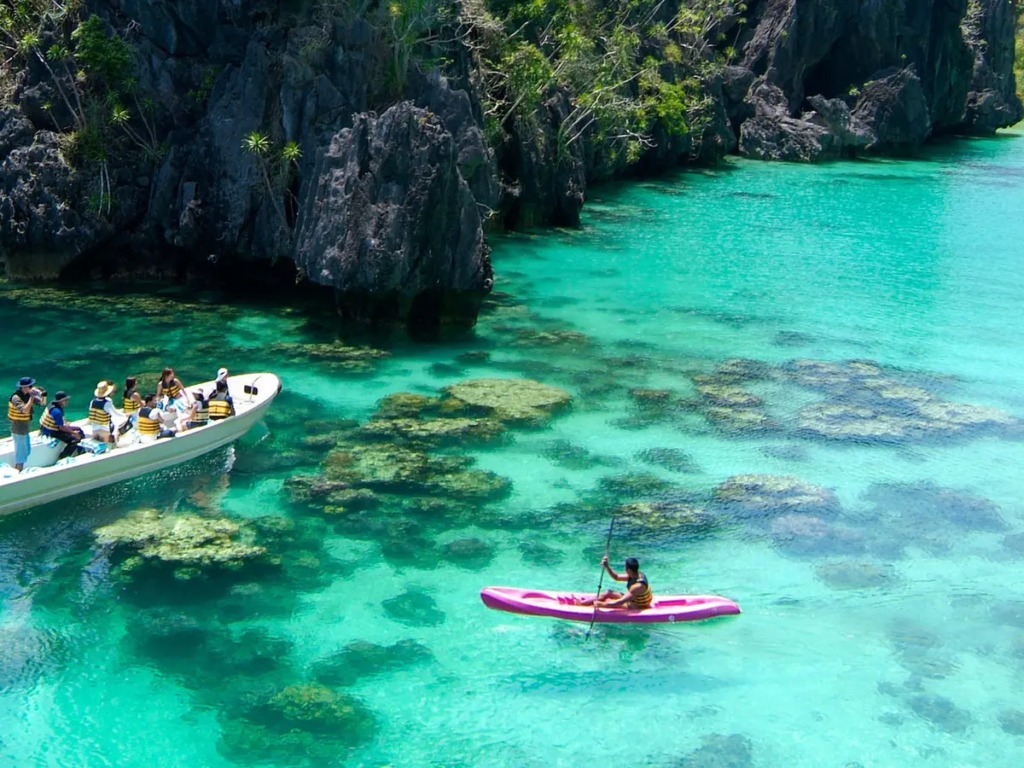
more intriguing details about Egypt’s natural wonders and attractions:
- The St. Catherine’s Monastery:
Located at the foot of Mount Sinai in the Sinai Peninsula, St. Catherine’s Monastery is one of the oldest Christian monasteries in the world. It is a UNESCO World Heritage Site and an important pilgrimage destination. The monastery houses a wealth of religious artifacts, including ancient manuscripts, icons, and the famous Burning Bush. Visitors can explore the monastery’s complex, visit its iconic library, and even climb Mount Sinai to witness the breathtaking sunrise from its summit. - The Valley of the Whales (Wadi Al-Hitan):
Situated in the Western Desert, the Valley of the Whales is a UNESCO World Heritage Site and an extraordinary paleontological site. It is home to an exceptional collection of fossilized whales and other marine creatures that lived around 40 million years ago. The fossils provide valuable insights into the evolution of whales and are a testament to Egypt’s rich natural history. Visitors can witness these ancient remains and learn about the fascinating marine life that once inhabited the region. - The Qattara Depression:
The Qattara Depression is a vast desert basin located in the Western Desert of Egypt. It is one of the lowest points in Africa and reaches depths of up to 133 meters below sea level. The depression is characterized by salt pans, sand dunes, and salt marshes. Its unique topography and extreme climate make it an intriguing natural phenomenon. The Qattara Depression also holds the potential for renewable energy projects, such as the proposed Qattara Depression Project, which aims to generate electricity using the temperature difference between the depression and the Mediterranean Sea. - The Petrified Forest of Cairo:
Located in the Maadi district of Cairo, the Petrified Forest is an ancient forest turned to stone. It dates back around 35 million years and consists of fossilized tree trunks and branches that have undergone the process of petrification. These fossils offer a glimpse into the prehistoric vegetation that once covered the region. Visitors can explore the site, marvel at the petrified remains, and learn about the geological processes that led to their formation. - The Wadi El Gemal National Park:
Wadi El Gemal National Park is a pristine protected area located on the Red Sea coast, south of Marsa Alam. The park encompasses diverse ecosystems, including coastal mangroves, coral reefs, sandy beaches, and desert landscapes. It is home to a wide range of wildlife, including gazelles, Nubian ibex, and a variety of bird species. Visitors can enjoy hiking, snorkeling, and diving, immersing themselves in the natural beauty and tranquility of the park. - The Saladin Citadel of Cairo:
Perched on a hilltop in Cairo, the Saladin Citadel, also known as the Citadel of Cairo, is a medieval fortress that offers panoramic views of the city. Built by Salah ad-Din (Saladin) in the 12th century, the citadel served as a military stronghold and a symbol of power. Within its walls, visitors can explore several notable structures, including the Mosque of Muhammad Ali, the Al-Gawhara Palace, and the National Military Museum, which houses a collection of weaponry and artifacts.
Conclusion:
Egypt’s allure extends far beyond its ancient wonders, encompassing a wealth of natural treasures that are waiting to be explored. From the awe-inspiring mountains of Sinai to the surreal landscapes of the White Desert, Egypt’s natural beauty is a testament to the country’s diverse offerings. Whether you’re seeking adventure, tranquility, or a tropical escape, Egypt has it all. So, pack your bags, immerse yourself in the charm of nature, and embark on an unforgettable journey through the enchanting landscapes of Egypt.

